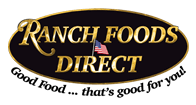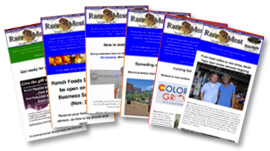Former environmental lawyer turned California cattle rancher Nicolette Hahn Niman says her book DEFENDING BEEF began as a handbook for chefs explaining why beef isn’t the environmental culprit it’s so often made out to be. At the time, Niman was serving on the board of directors for Chefs Collaborative, a culinary organization that seeks to inspire, educate and celebrate sustainable foods. The lawyerly case she makes was first summarized in a New York Times op-ed, entitled “The Carnivore’s Dilemma,” and later expanded into a bestseller.
“I’ve been astonished by the statement that more than half of climate change gases come from cattle. That is just ridiculously false,” she said during the Slow Meat symposium in Denver. According to the Environmental Protection Agency, all ruminant animals combined account for less than 2 percent of methane emissions. In her writings, she also points to research showing that only about one-fifth of the food system’s energy use is farm-related. The rest goes into processing, transportation, storage, retailing and food preparation. That means in-season foods that are minimally processed, and grown and sold locally, are generally climate-friendly, she says.
Carbon dioxide makes up the majority of agriculture-related greenhouse emissions. On a worldwide basis, most of that results from clearing forests to grow crops or graze livestock. In Brazil, this deforestation is connected to soybean cultivation. Much of that soy production ends up in the tofu and soymilk sold in American supermarkets, an alternative protein source many vegetarians rely on, she notes.
Meat production is unique because it is a way to utilize marginal lands where other food crops can’t be cultivated, she explains. Well-managed animal farming minimizes greenhouse gases and benefits the environment, she says. “There’s nothing about grazing animals that is intrinsically environmentally damaging. In fact, if you look at the long term history of the globe, you see that huge herds of grazing animals have been essential to the ways our ecosystems function. We should look at cattle that are well managed as a proxy for the disappearing wild animals,” such as North American bison or wildebeest on the Serengeti. Research shows that properly timed cattle grazing can increase vegetation by as much as 45 percent. Compared to cropland, perennial pastures used for grazing can decrease soil erosion by 80 percent and markedly improve water quality, she adds.
“I was compelled to write this book by the over-simplication of this particular issue,” she explained while at the Slow Meat conference. “I’m leery of the ‘eat less meat’ message. Most ranchers are living a very marginal existence, and if concerned citizens eat less beef that doesn’t do anything to support ranchers who need the support.”
Echoing her remarks was Will Harris, a grass-based Georgia rancher and one of the rock stars of the regenerative ag movement. He said his ecologically managed ranch “sinks” far more carbon than it releases into the atmosphere. Ranch Foods Direct owner Mike Callicrate also took every opportunity to drive home the idea that improving environmental sustainability is dependent on bringing back diverse multi-species family farms where animals and plants are grown in rotation and valuable manure remains on the land: “My message is that we have to create a new non-industrial food system that clearly supports family farmers and rebuilds rural communities.”


